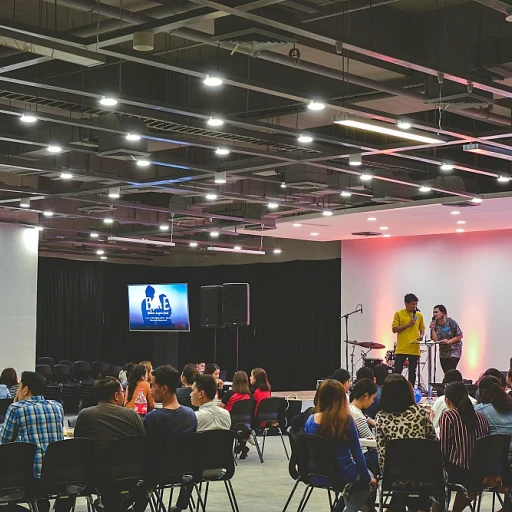Defining a Backfill Position
Clarifying the Concept of Backfill Positions
Defining a backfill position is essential for any organization aiming to maintain smooth operations when an employee vacates a role. In essence, a backfill position refers to the role filled by another employee when a current employee leaves, either temporarily or permanently. Contrary to initial assumptions, backfilling isn't solely about filling a position quickly; it's about ensuring the continuity and stability of team operations.
When a team member exits the company, whether due to resignation, temporary leave, or a promotion, the resulting vacant position can disrupt the workflow. This is where the backfill strategy becomes invaluable, allowing for a seamless transition. Companies often use backfill positions as a strategic tool in succession planning and talent management, ensuring teams continue to function effectively without interruption.
Incorporating backfill positions into the recruitment process requires a nuanced approach. This includes crafting a precise job description, understanding what the role demands, and evaluating current employees who may fit these requirements. The organization must also decide whether the backfill is needed for the short term to cover a temporary gap or for the long term as a permanent replacement.
Given these complexities, the backfill process is a dynamic component of strategic talent management. Implementing best practices in backfill recruitment, such as cross-training and the use of management software, ensures companies can respond effectively when employee leaves impact their teams. To enhance recruitment with consistent interview practices is one method to streamline this transition and select the top talent needed to fill these critical roles.
The Importance of Backfill Positions
Valuing Backfill Positions in the Hiring Structure
Understanding the importance of backfill positions in recruitment is crucial for organizations that aim to maintain operational efficiency and team morale. A backfill position emerges when an employee leaves their role either temporarily or permanently, leaving a gap that must be promptly addressed.
The inherent value of backfilling lies in its dual focus on sustaining productivity and supporting team dynamics. Fulfilling backfill roles helps in avoiding prolonged vacancies that disrupt workflows, thereby ensuring continuity. Maintaining regular processes also supports the morale of current employees, who might otherwise face the pressure of additional responsibilities.
Backfill positions are significant within the framework of succession planning, as they provide the company with the chance to vet talent from within the organization. This approach not only mitigates recruitment costs but also promotes employee engagement and retention. By nurturing current team members, organizations create a robust pool of candidates who are already familiar with the company's operations and culture.
Incorporating a
consistent interview practice ensures that the recruitment process for a backfilling position aligns with the best practices and standards the organization upholds. Establishing defined and consistent procedures paves the way for acquiring top talent who can smoothly transition into their new roles.
While backfilling may seem predominantly tactical, it also holds strategic implications. Organizations must consider the big picture—integrating backfilling within their long-term talent and management strategies to effectively harness the potential of their current workforce. This proactive backfill strategy contributes to an organization’s ability to adapt to the ever-changing landscapes of business and industry, allowing for sustained growth and success.
Challenges in Sourcing for Backfill Positions
Sourcing Challenges for Backfill Positions
When it comes to the recruitment process for backfill positions, hiring managers and recruiters often encounter unique challenges that are not as common in other types of roles. These challenges primarily arise from the urgency and dynamic nature of backfilling.
Firstly, the time constraint is a significant issue. When an employee leaves unexpectedly, there is typically a need to fill the open position quickly to prevent disruptions in the team and the organization's operations. This often results in a rushed recruitment process, which can compromise the thoroughness that is usually applied when sourcing for other roles.
Additionally, accurately defining the role becomes more complex during backfilling. The job description for a backfill might need adjustments to accommodate changes in the team or organizational structure since the position was last filled. This can make it difficult to pinpoint exactly what backfill strategy should be applied to attract the top talent that is not only skilled but also a good cultural fit.
Another aspect to consider is the potential impact on team members. Current employees might feel uncertain about management decisions or anxious about changes in their team dynamics. This can further complicate the recruitment process, as recruiters strive to maintain team morale while integrating new talent.
Moreover, availability of talent is a common issue. The best candidates for a backfill position might already be employed, requiring creative sourcing techniques to identify and attract passive candidates. Implementing cross-training and succession planning as part of the organization's strategy can also help mitigate some of these challenges in the long term.
Overall, companies need to be strategic in their approach to managing these obstacles, possibly utilizing candidate management software to streamline the process and integrate best practices for both short term and future needs. More insights into these challenges can be found when
exploring opportunities in dynamic job markets.
Strategies for Effective Backfill Recruitment
Strengthening Backfill Hiring Processes
Recruiting for a backfill position is no easy feat; it requires strategic planning and execution to ensure the seamless transition of roles. Effective backfill recruitment is pivotal to maintaining continuity within an organization, and here are some methods to enhance this process.
- Precise Job Descriptions: A comprehensive job description is invaluable when filling a backfilling position. Clearly outline the responsibilities, qualifications, and expectations of the role, ensuring potential candidates understand what the position entails. This aspect not only aids in attracting top talent but also sets clear benchmarks for performance.
- Advanced Management Software: Leverage modern management tools to streamline the recruitment process. These tools can assist in tracking candidate progress, managing applications, and scheduling interviews, ultimately saving time and resources for the company.
- Succession Planning: To effectively manage the transition period when an employee leaves, organizations should focus on succession planning. Preparing current employees for potential role changes not only prepares them for future opportunities but also ensures a reserve of talent ready to step into vacant positions.
- Employee Cross Training: Encouraging cross training within the team can facilitate smoother transitions. Team members who are familiar with multiple roles can temporarily hold the fort until a suitable candidate is found, minimizing disruption to operations.
- Efficient Time Management: Prompt action is critical in backfilling positions to prevent gaps that may impact the organization negatively. Establishing a rapid, yet thorough recruitment process can help reduce the time taken to fill a position.
Enhancing these strategies within your backfill recruitment plan will not only aid in filling positions efficiently but also support the long term stability and productivity of your team. Craft your backfill strategy with these aspects in mind for best results.
The Impact of Backfill Positions on Team Dynamics
Influence of Backfill Roles on the Existing Team
Backfilling positions can ripple through a team, impacting dynamics, morale, and productivity. When a vacant position is filled, it often introduces a change in the team dynamics, whether for the short term or in the long term. Understanding the implications of this change can help organizations navigate the recruitment process more effectively.
When an employee leaves, their role is typically absorbed temporarily by existing team members, often increasing workload and stress levels. This adjustment period can affect morale, particularly if the backfilling takes longer than expected, or if communication about the backfill process isn't clear. Hence, having a robust backfill strategy and clear job descriptions can mitigate some of this disruption.
Moreover, bringing in a new hire or moving a current employee into a backfill position can have both positive and negative impacts. It's essential for an organization to ensure that new team dynamics are taken into account, allowing team members to acclimate to changes. This approach not only enhances team collaboration but also helps in maintaining the caliber of work.
It's also vital for management to engage in succession planning and cross-training to prepare current employees for potential backfill roles. This process can streamline transitions, making them less disruptive and ensuring that the team can continue to operate effectively, even when key positions are vacated.
As organizations continue to refine their recruitment strategies, integrating management software tailored to backfilling can assist in aligning new hires with the current team and organizational culture. This alignment is crucial for maintaining a cohesive work environment and promoting employee retention.
Effective management of backfill positions is not merely about filling a vacancy; it's about nurturing team cohesion and ensuring seamless operations, ultimately contributing to the overall success of the company.
Future Trends in Backfill Recruitment
Emerging Trends and Innovations in Backfill Recruitment
As organizations continuously adapt to dynamic business environments, backfill recruitment has been experiencing significant transformations. Understanding these changes can help enhance your strategies and prepare your team for the future.
One of the emerging trends is the growing reliance on advanced management software. These tools streamline the backfill process and optimize team management, ensuring that the most suitable talent is identified swiftly. With features like real-time analytics and seamless integration with existing organizational systems, these platforms provide invaluable insights into recruitment metrics and hiring outcomes.
Another trend is the increased emphasis on cross-training existing team members. By equipping current employees with a broader range of skills, companies can handle a vacant position more efficiently while reducing the immediate pressure of sourcing external candidates. This approach not only strengthens succession planning efforts but also fosters a versatile and adept workforce.
Furthermore, the spotlight is on creating robust backfill strategies that consider both short-term needs and long-term objectives. Organizations are integrating these strategies with their overall talent acquisition processes to ensure that they remain agile in the face of unexpected employee leaves.
Finally, recruitment teams are focusing more on crafting precise job descriptions and refining their recruitment processes to attract top talent. This meticulous attention to detail helps maintain smooth onboarding despite the transient nature of backfilling positions. Leveraging best practices in backfill recruitment will continue to play a pivotal role in advancing an organization's adaptability and resilience in a competitive marketplace.












